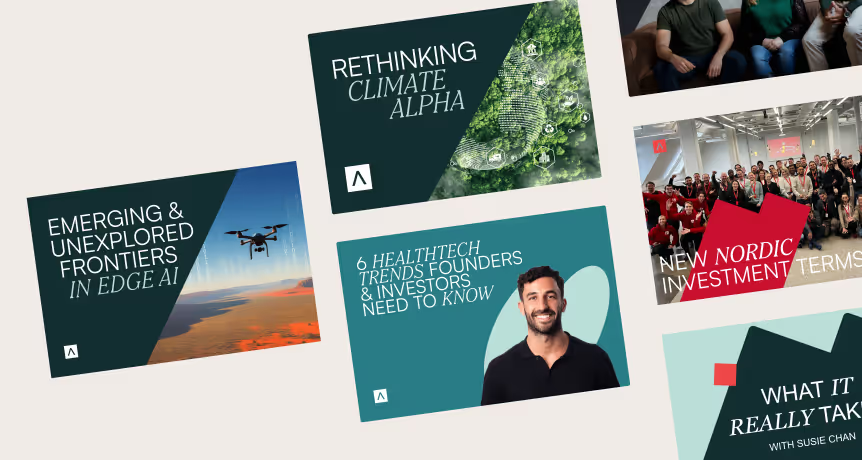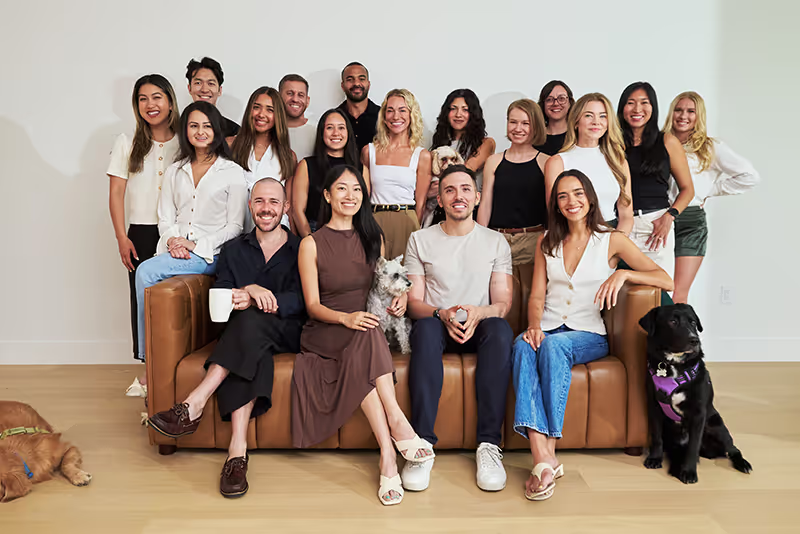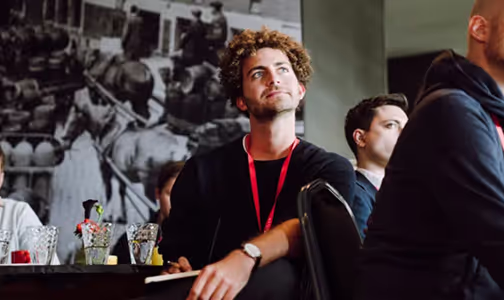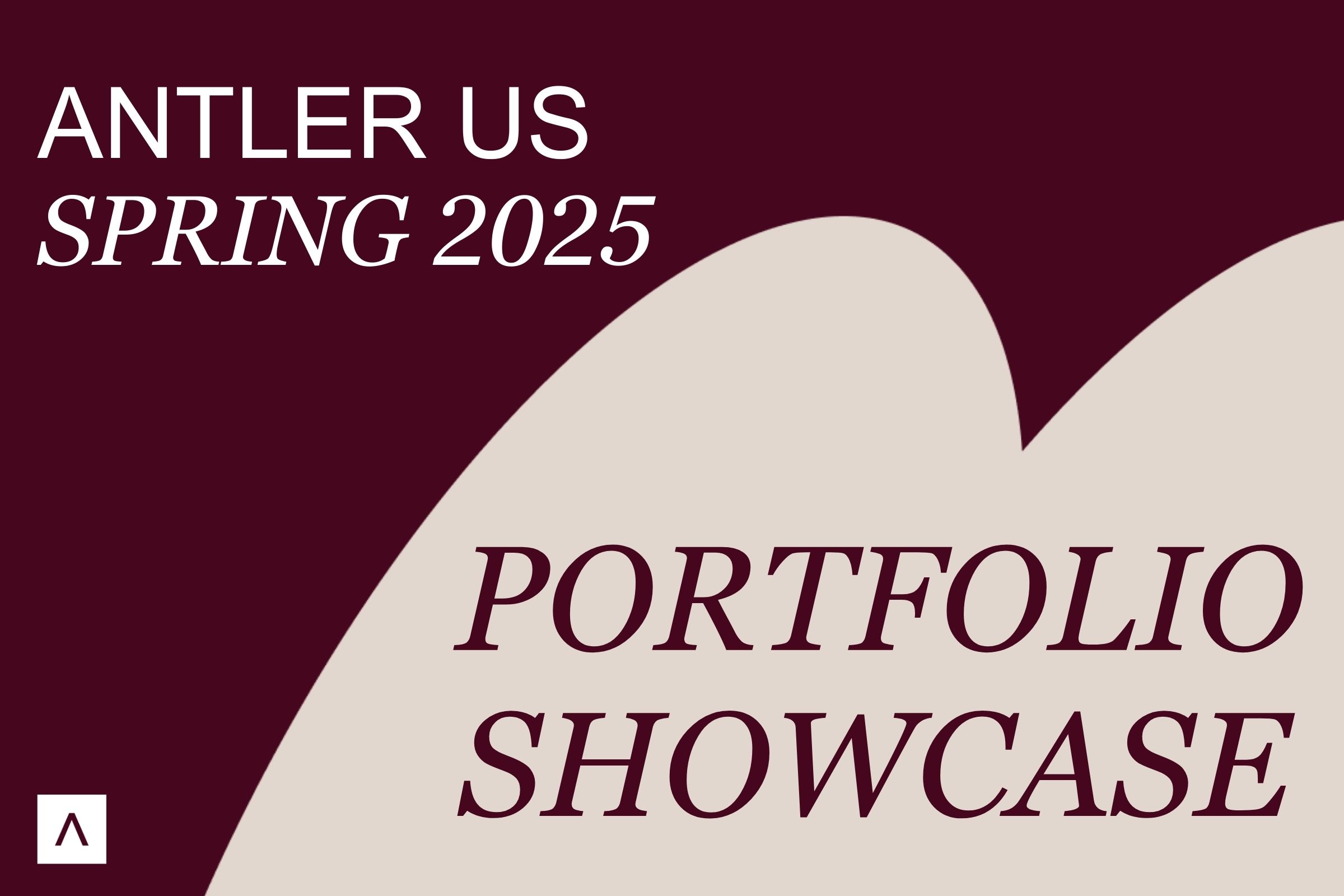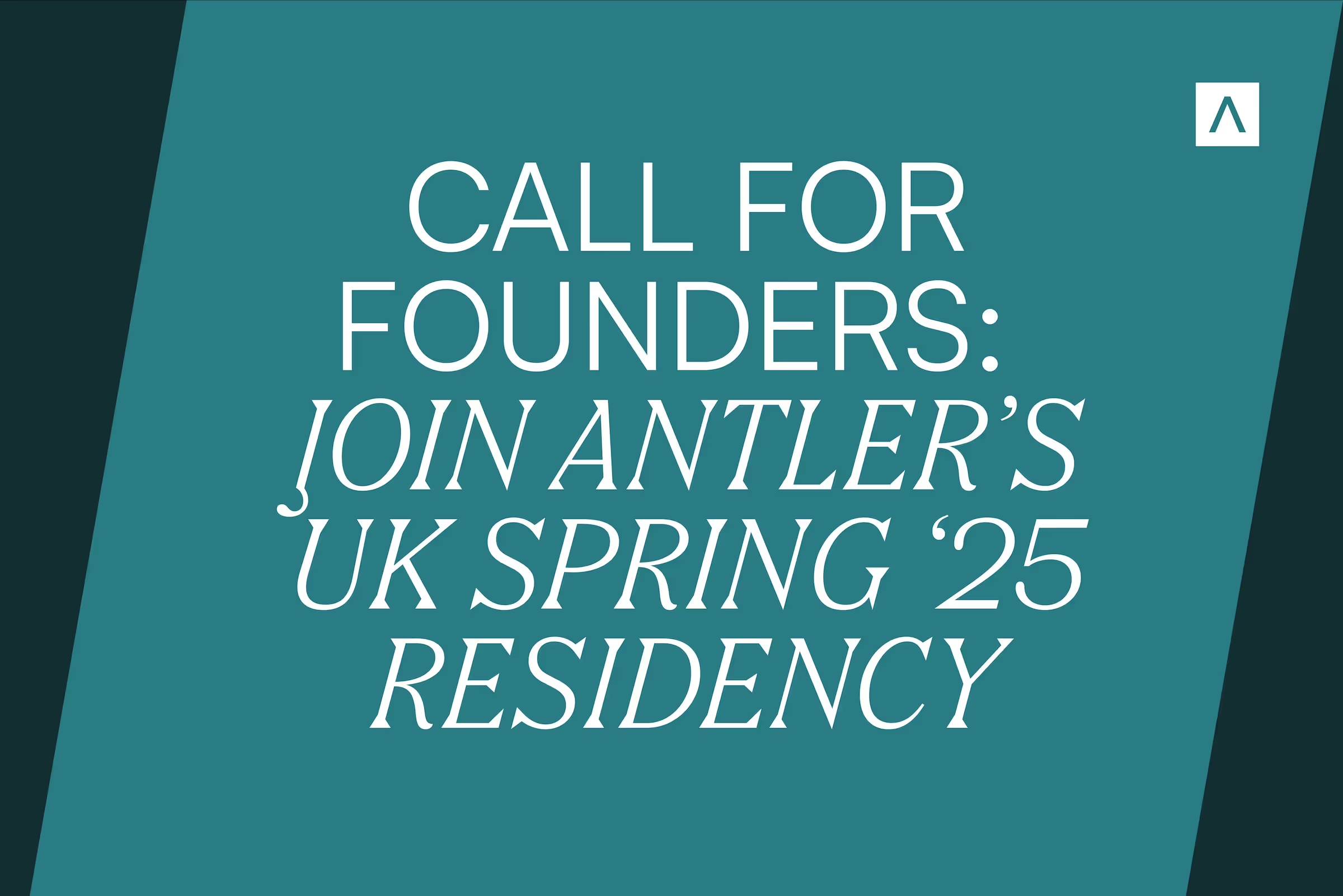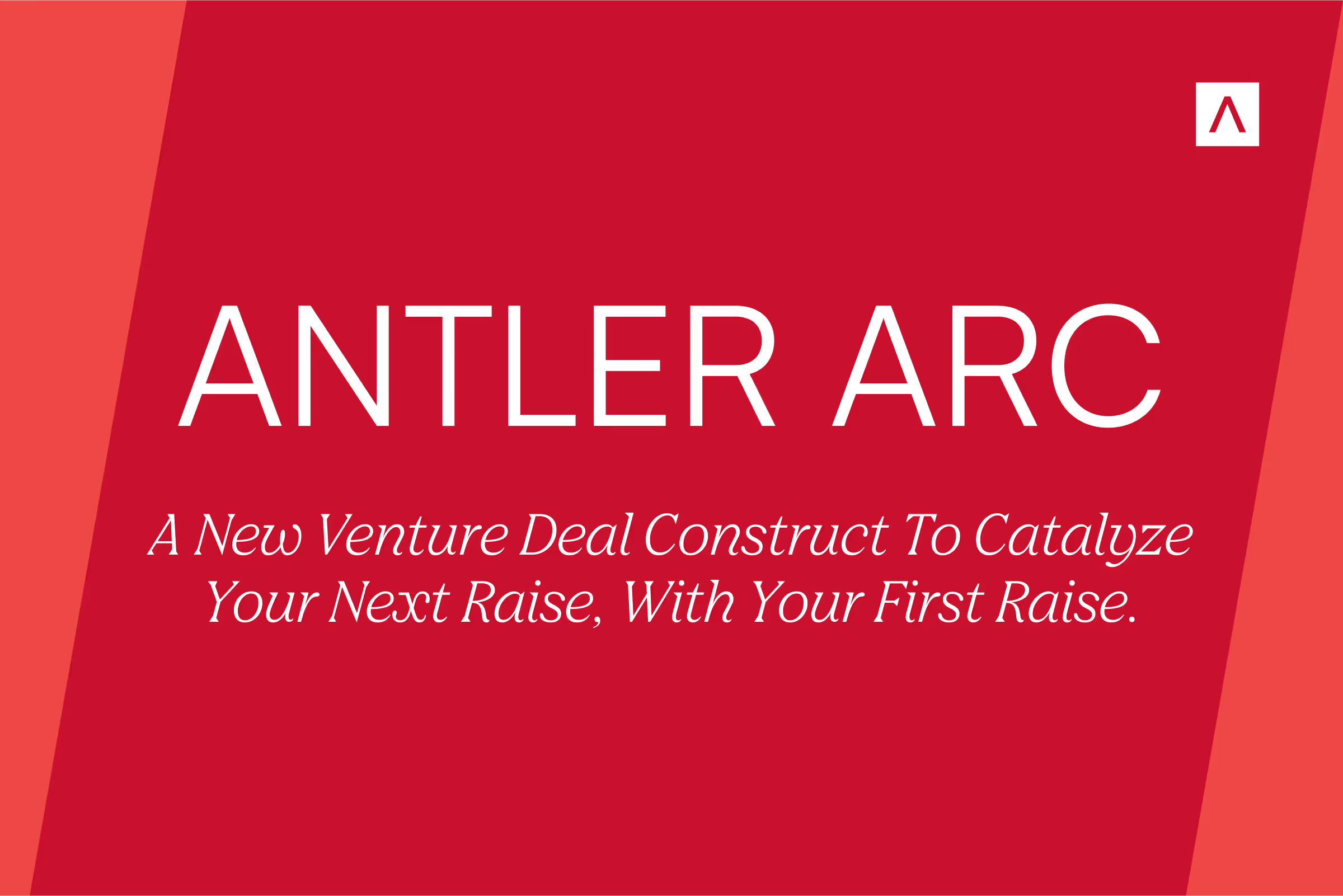Dr Tommy Mermelshtayn is the Chief Strategy Officer of Australia fintech darling, Zip.
Since its launch in 2013, Zip has transformed itself from a local company to a global BNPL powerhouse. Most recently, their recent merger with US-based Quadpay and expansions into new markets in the Middle East, Canada and Czech Republic has seen Zip's phenomenal success as a leading BNPL company.
During a virtual fireside chat, Dr Tommy sits down with Antler Australia Managing Partner, Bede Moore, to discuss Zip's growth to date, what it takes to excel in corporate strategy and what happens when a business is ready to step up to the next level.
------------------
You can watch the virtual fireside chat here.
Or alternatively, read the transcript below, including the audience Q&A. This transcript has been edited for length and clarity and starts from the beginning of the panel discussion.
------------------
Bede Moore (BM) (00:07):
Hi to everybody. Thanks for joining us during freedom week for those of you to whom that applies, and to the rest of you, just, anyway, lovely to see you. Still coming from home for me here in Sydney. I hope many of you are planning more adventurous outings this evening after we've heard from Tommy, who is our special guest here tonight. He is the CSO of Zip, which, of course, is a global leader in digital retail, finance, and payments.
Over the last five years, Tommy has been at Zip, and he's played a central role in driving the company's transformation, which has seen it turn into a global BNPL powerhouse, where it operates now in Australia, NZ, the UK, the US, and South Africa.
Along with leading the strategy of Zip Co, Tommy drove Zip's 2020 merger with the US-based BNPL company, Quadpay, and has been responsible for building out Zip's new markets in the Czech Republic, the Middle East, Canada, and they are currently looking at a range of other jurisdictions. He came to Zip after being the head of strategy in New Markets at Equifax, he holds a PhD, so it's actually... It's Dr Tommy, from the University of New South Wales, and has degrees in finance and information systems from Stern School of Business at NYU.
It is a pleasure to welcome him here today. Thanks for taking the time, Tommy.
Tommy Mermelshtayn (TM):
Thanks, Bede, and welcome... super excited to meet the Antler community and plug into the startup ecosystem here in Australia. So, thanks for having me.
BM:
Awesome. Thank you. Well, let me perhaps give a brief potted history... and it is brief because Zip has grown immensely quickly as a company, and a really critical section of it, You have been there in the leadership.
Larry and Peter founded it in 2013 as Zip money, And they were offering digital credit options to customers, having raised the grand total of $170,000, which, given its current markets cap, is wild and almost impossible to imagine. By early 2015, it actually... it reverse-listed using the shell of a company, I think, onto the ASX in-
TM:
Rubianna Resources, which is a mining company in Perth. And they actually had to fly out and do diligence on the shelf because they didn't want any liabilities from old mining tenements. So, literally, they flew out to WA, and that's how we inherited Philip Crutchfield, our first chairman, actually.
BM:
And what was Rubianna Resources doing, just out of interest? Was it a prospecting company or something?
TM:
Yeah, it was looking for gold.
BM:
Wow. The most-
TM:
Hopefully, they found it with Zip.
BM:
Yeah, that's right. That's [crosstalk 00:03:22].
TM:
Actually, a lot of those shareholders ended up believing in the story, and have stayed in the journey. So, prior to COVID, where we have our AGM or an investor day, they would actually come to ABL's office and we would meet some of the original investors in Rubianna.
BM: (03:42)
That must be the coolest... And I do like that, they were looking for gold but they found it in a FinTech company that kind of emerged from the shell. It's kind of interesting... It's an interesting one.
And so, that was the kind of mechanism for them to kind of raise $5 million, right? As I understand it, that happened roughly a year before you joined the company? Tell us a little bit about what Zip looked like when you arrived, and what it was that convinced you to join the company?
TM:
Sure. So, you've got to remember, eight years ago, there weren't Antlers, there weren't Blackbirds, Air Trees, Square Pegs, and the ASX was a very healthy, and remains a very healthy, viable option for early-stage businesses to raise capital. And you see the health of the IPO market here. And so, that was the first... There was a lack of startup capital, really, which drove the decision to do the reverse listing.
When I joined... and, funnily enough, when I joined and actually when I started working for the business are two different things, because Larry and Pete, I got to know through my times at Equifax. And what I was doing at Equifax, actually, that was a good segue to Zip, was I was driving corporate development and new markets there. So I was looking at trying to transform a credit bureau to a data analytics business.
And one of the things I did there was created a FinTech type of offering, because the idea is, the products themselves are data, and the beauty of a bureau business is the more you use the business, the more data you create, the more valuable the bureau becomes, similar to our two-sided network here at Zip.
And I felt that we were just at the beginning, the cusp of growth from FinTech, and there was a huge amount of disruption to come. And once you plug into bureaus for credit or ID services, you're pretty hooked. You build scorecards off the back of it. So I came up with an offer, which basically said, for the first 12 months any FinTech that's really small could just get free services, unlimited use of free services. But that actually plugged me into the ecosystem, and through that experience, I got to meet lots of businesses.
And I was doing work within FinTech Australia off the back of Equifax. And you could feel that change was in the air, that businesses were going to create new models. And I was looking for an opportunity that really was within the credit landscape because that's what my background was. And Zip started off as a point of sale lender, trying to really disrupt that Harvey Norman interest-free credit card offering. And when I unpacked what Larry and Pete were creating, I was like, "Actually, there's something really unique and novel here, and I think it has legs," and so that's why I jumped ship. Funnily enough, I do my induction session here at Zip, and I, hand on heart, think I have one of the best jobs in Australia, and I really do believe that, I'm not just saying that.
And I often reflect on why that is, and I look back at the decision that made me join Zip. The focus on financial responsibility, the culture that's been created, the leadership team, Larry and Peter, the founders, the opportunity around payments and credit more generally, which I think is still hugely exciting in an area that continues to get investment and a lot of focus, and the opportunity is big. And probably the biggest one for me is having a real impact. So, when I joined Equifax, quite early in their transition, there was a very big focus on our B2C offering, a direct to consumer financial literacy. By the time I left, when they were bought out by a big US giant, they'd lost a bit of that feeling. And giving money to consumers is one of the most immediate ways to impact their lives. If you do it in a way that's transparent, fair, and really different from old school credit cards that are reliant on interest in revolving debt, that's a very attractive proposition and it very strongly resonated with me.
So, when I joined, we were around 40 people, we're pushing over a thousand now. Small office in York Street. One of the first things I did was help us move into a subway space on bridge street. And I just got deeply involved in everything and anything because it was startup 101. I never worked for a FinTech startup, but I actually consider myself a general so I'm actually not very good at anything, I'm okay at a lot of things. And there were a lot of things to do, whether that was managing integration, selling to merchants, and so on and so forth. So it's been an amazing journey, and the business is very different but it's retained a lot of that original magic.
BM (08:33):
And, I mean, it really means that, though, you kind of were there in the inflection point, right? So, obviously from 40 to a thousand is this, I think, a critical period, and it's a hard part to learn because only very few businesses really get to go through that inflection. Tell us a little bit about the expansion that occurred between going from having 40 people to actually being able to consider doing a merger by 2020. Those four years must have been subject to a lot of growing pains. What really unlocked that for the business?
TM:
I guess it's always about taking people on the journey. So, being clear on where you want to get to, not always 100% sure of how you're going to get there. Because, every six to eight months, things would change, the business would be in a new chapter of its growth. What we found was there were these chapters, and each chapter presented itself with a different range of opportunities or challenges. I remember when we were around 80 or 90 people, everything was on fire, literally everything was on fire, and we just couldn't understand what was going on. Why? You sit next to this individual. How could you have not had a conversation around something you're both working on?
And it was just, "What's going on?" And during that time period, it was communication. So, we were used to a relatively small business, our communication channels, our huddles, bringing everyone together, was really easy. But as we started adding a lot more people and making sure that we're aligned, we realized that we needed to really double down on communication. And it was the first time we actually created true strategic artifacts, like the plan on the page, that north star vision, the product strategy. And those were important artifacts to start bringing people into the journey and create the operating leverage within the business so that everyone knows what we're running towards, what are the key metrics we're trying to move, what are the strategic pillars? And then, the first time we expanded offshore and the first time we launched a new product, or we did a reorg around different customers, merchant and consumer because we finally had a big enough engineering practice and product team to start building out our practice so we can actually focus on our two specific cohorts of our network.
And each time we evolved, there was a change, and the resilience and finding people that can actually work through that change was one of the critical things when we were looking to hire talent, particularly leadership. To this day, we look for that resilience, because we know that the business will continue to evolve. So scale up is hard, but then how do you build the global powerhouse? How do you go into... from 13 markets to 20 markets? That's the next stage of our growth. And that resilience to change is always going to be important for us.
"If there weren't fires, then you're probably doing something wrong because you're not going hard enough, you're not going fast enough, you're being too conservative. So it's okay to have fires... The trick is knowing which ones are going to become out of control and which ones you need to address today versus tomorrow."
BM (11:37)
Yeah. One of the things that I think is quite interesting is, you talked there at the beginning of your answer about culture, and when founders are... I mean, everything was still on fire with 90 people in the business. I'm sure there's a bunch of founders, probably on the line right now, who are just thinking about how much of an engulfing fire is in their five-person business, for example, right now. When you're at that stage, you're five people or whatever, the last thing that you're thinking of is what your culture is going to be, what your vision is going to be. It's often something that is absent from these earlier stage businesses. And yet, I'm going to guess that you would say that one of the things about Zip is that, when it was at that 40 person company all the way through to a thousand, one of the sustaining components, one of the pieces of glue, was the company culture.
How much was that a central piece for this scaling, and how did you and the executive team kind of use it to build the company?
TM:
So, I guess there's two pieces there. First of all, there are always fires. There are always small fires burning, and that's okay. If there weren't fires, then you're probably doing something wrong because you're not going hard enough, you're not going fast enough, you're being too conservative. So it's okay to have fires, it's just about... The trick is knowing which ones are going to become out of control and which ones you need to address today versus tomorrow. In terms of the culture, a lot of it happens without being quite thoughtful. So there's the combination of being active in trying to codify values and do those things. We didn't do that when we were a 40 person business. It was more about how did we behave, how did we think, how did we look to hire people that had the right traits that aligned with the kinds of things that were important to us. And simple things like just good humans, people who actually cared about what we were trying to do, people that understood that there was an opportunity and it would be a challenge.
So a lot of those things just happen. And then, as you continue to grow, it becomes important to codify them. And that's when you start creating the values, individual cues, and some of the other physical artifacts that live within the office. The graffiti. I remember the first time we graffitied a wall and we're debating what to put on it. So, we started off with more just what's cool, and then we were like, "Actually, let's put some of our values up there." I got a photo from Larry, actually, the CEO, co-founder, and he was in San Fran just meeting businesses and FinTech investors. He met Ribbit. They have beautiful graffiti, "It takes money to change money." And so those kinds of things actually just stick with you. So it's a combination of things that happen by themselves, and being quite conscious of creating some of those codifying tools.
BM:
And I think the other piece, though, as you mentioned, is that you literally had to kind of reorg to accommodate the kind of scaling of the business. Obviously, there are fires and there are communications that are not working effectively.
How does the leadership group sit around and make those decisions, that we need to reorg, we need to restructure? Is that something that you take out of your everyday work and you go and sit down and think about, and then come back to the business and roll out. How did that take place?
TM:
Well, it happens probably in two ways. So it been consciously when we're doing planning and we're doing, "Okay, these are the strategic pillars, these are the initiatives, and how does that flow into budgets?" So even at that 40 or 50 person business, you're probably not doing it to the level of detail that we're doing today, but we had a view of, "These are the things we want to do over the next three to six months. Do we have the people and the resources to deliver, and what are the trade-offs we need to make," and so that drives one element of org design.
And then the other is, it just becomes obvious like we have to do something because either thing aren't working or we're not taking advantage of the opportunity. And you just realize you have to do it. And the quicker you do it, the faster you execute everyone, everyone's better off for it.
The beauty is, the reorgs are typically because of growth, it's not because... In our case, it was about how do we manage continued growth? There's only one time in the history that I've been here that was really around the call site equation, which was during the uncertainty around COVID, where we had to make very quick decisions in a world of unknowns. And those were very hard, but the leadership team came together really effectively, and we did what I would say was one of the best jobs I could have ever imagined or hoped for, because we did it with humanity and with the right leadership team. But it's usual growth, so it's a good story. We have to change because we have an opportunity we want to take advantage of, and people rally around that.
And as long as they're still aligned with where the business wants to go, they'll realize that there's going to be lots of opportunities, but also most likely blocks of change. And some people can work through that and others probably can't, and those don't make it to the next stage of growth. So not everyone that's with us today was with us when we were 40 people. I'm quite fortunate that I have, but every day I have to ask myself, "Am I going to be good enough to get us to the next level?" And that's the reality of the situation.
BM: (17:012)
Yeah. So you're the CSO of the business, and what that means is, I think, to a certain extent, is not just governing the strategy of the business now, but being the chess master who is looking down the board and thinking about what is coming. I'm interested to know how you've... The business has had incredible success through the growth of BNPL.
How did you think about that? How did you think about anticipating movements in the market? And considering specific things that you've been involved in, like the Quad Pay deal, how did those all get pieced together to build the business?
TM:
Often it's through conversation. So, you spend time with Larry and Pete, you spend time with merchants, you see what's happening in the consumer space. There are these macro trends that are happening by themselves, and you just sort of distil all that information and figure out where do we play and where do we not play today?
Part of it is luck, so you have to make the right move at the right time. So the fact that we moved more into payments from credit when there were opportunities because there were debit schemes coming up, access to data, merchants were looking for new tools, customers' behaviours were changing. And so, not only knowing what to do but also when to do it, is just as important as what to do. And then there are times where you've just got to be bold. And so, what we do is, we have two horizons we play in, so we've got to deliver on the six-month plan, but we also have a vision of where we want to be in three years.
For us, five years is just too difficult. In the dynamic world we play in, it feels like a stretch to even get to three because there's so much... so many opportunities that we want to run after and we want to evolve to. So, being very clear on short-term goals and where you want to be over the next three years is how we've balanced our planning cadence. And then there are choices in the risks you make. So, I remember quite fondly a conversation we had as an executive team and then at a board level, which was, we built a very large and impressive business here in Australia and we felt this could become a $5 billion fourth pillar and challenge the big banks. Or do we take this business and say, "Well, actually, this idea of simple interest-free instalments, customers changing the behaviour, merchants looking for new tools to engage with different customer segments. Is that an Australian phenomenon or is there an opportunity in other markets?"
And we were very clear that there was going to be a shift and a shift away from credit cards and... And, actually, in an emerging market, not only a shift away from credit cards, just a new form of credit that's fundamentally better. And we said, "Well, we know it's going to get more expenses to go global, we know it's going to be hard, but if we want to go global, and if that's part of our ambition and we want to be part of a global powerhouse or build a global powerhouse, we've got to go global and we've got to go global now." We saw Afterpay making their moves, we saw Klarna making some of their moves. And it was a conscious decision, and then you build a plan on how you're going to execute. But they're choices, you have to make those choices.
BM (20:07):
I'm really interested in this. I think this is a very common line of questioning out of Australia, and Australia has demonstrated, particularly in the last few years, the ability to export various different types of technology globally with great success. But when you were trying to make that critical decision about, "Well, can we compete globally," How was what your sense of the global landscape, and potentially the disadvantages of doing it from Australia, or alternatively, a sense of being innovative but still from Australia, can you talk about how that featured in the decision making?
TM:
Yeah. So it's not always about three moves ahead, it's about the next move, right? So the idea was, "We want to expand beyond Australia so let's start with New Zealand." So we didn't have to go very far and proved to ourselves that we could run a business in another market. And then, also the Part Pay acquisition, which was the beginning of the global expansion plans, over around three years ago now, was also about acquiring a technology platform. So we had a lot of IP and a lot of capabilities, but the platform we built, the original platform that we built eight years ago in Australia, it wasn't really fit for purpose, wasn't lightweight enough. And there was a lot of work to be done on that platform to be able to scale it into other markets. So it was a combination of, one, trying to find an opportunity in another market. And two is, if we can acquire a platform that we can add some of our core capabilities to, and some of our IP, that would be a perfect combination. And we found that.
And so we found a business in Part Pay that not only had the platform in New Zealand business, but had exposure to the US, the UK, and South Africa. So immediately, with one move, we were able to, one, tick two of the boxes, prove to ourselves we can move into another market, and two is, acquire some tech and core capabilities to then enable the next move after that.
BM:
I realized that I completely neglected to say at the beginning that we would welcome people's questions throughout the course of this, and some people have already started to do so. Please, if you have any questions for Tommy, please put them in the Q&A tab in the bottom ribbon of the screen, and I will incorporate them as we're moving along. One question that's kind of... or one thing that kind of touches... from the audience, Tommy, is with regards to differential performance in different markets, which is obviously... as you go global, is one of these challenges.
How do you deal with entering into tougher markets, like, I guess, the US, the UK, Europe, where there are other large competitors, and building differentiation? How does that kind of change your strategy when you're thinking about entering into those sorts of places?
TM (23:21):
Sure. So, I guess you've got to cut it into a number of different factors. One is we're resource-constrained. We're limited by capital, we're limited by people, and so we need to be quite conscious of which markets we enter into. And it's a combination of being strategic because that's a large market, the dynamics in that market are going to be good for these types of products and services. We'll look at the competitive landscape, we'll look at the [00:23:48] economics, the regulatory construct, the size of the prize. So we'll form a view of a market, that's one piece. And then it's, "Do you have an angle?" So, are you going to be able to enter, compete and actually build a business, and scale it quickly? So one of the questions I have is, "If you get a million customers reasonably within the first 12 to 18 months, do you have a plan on getting that?"
And often you're following, in our case, merchant or partner, or it could be an inorganic acquisition that gives you that baseline of the customer base that you can grow from. So it's a combination of those two things that we're always straining, measuring and monitoring, and learning, in terms of a market entry. And then, different markets are going to be quite different, so we'll look at the market like the US... and we're probably number four there... We want to be a top-three player in the markets we plan, but the US is... It is the largest of the large, $5 trillion addressable opportunities. And if you're the fourth player there, we think actually you build a very nice, very large business. And like credit cards, it's not a winner take all type of mentality, and there will be many players that are either global and big or segment-specific, that will build very sustainable large businesses.
And then you go to the next level, which is how do you actually compete in the US? What are the things our competitors know that differentiates us? And there's a handful I can go into, but it's... our revenue model is quite different, our technology stack is different, the way we integrate, the way we use virtual technology with virtual part technology, open and closed loop. The way we leverage our global relationships and our global merchants, the way we innovate with some of the products and the way we pass customer fees on to... in certain verticals. So there's a range of things that are specific to that market, which is similar to some of the other markets we play in but quite different to Mexico, where it's an emerging market and where we're one of the first in. And there it's about how do you find the right merchant partners and how do you amplify the brand? How do you deal with un-banked?
This is often the first credit product for a lot of consumers in those markets. So there's going to be a playbook that there'll be things that are similar, and then there'll be a playbook that things are different. But then we have one resource pool, so it's about how do we allocate resourcing across all those opportunities, and where are there efficiencies? If we're going to build something, can we build it once, and offer it into multiple markets?
BM:
So, probably now, you've kind of gone into enough new markets where, just for example, you have a developed market playbook and a developing market playbook. I'm just interested, though, if you were to kind of describe it, is the entry strategy, "Okay, we're going to go into a new market and we're going to put up a core offering, and then we will refine it per that geography and per what we find when this experimental implementation period?" Or would you say, prior to going into the US, "We're going into the US. We think we need to adapt our product strategy in these ways in order to be competitive there," such that it is a different business that you are putting on the ground from day one? How do you set about making those decisions?
TM:
Well, we think about what we need, actually, to compete, and when. And the truth is we try to keep it as close to the core as possible because that gives us the ability to take our platform, then again go into another market and drive the efficiencies across the group. Pay in four, for us, is one of the flagship products, and the beauty of that product is you can launch it... it's relatively light so credit risk decisioning is important, but where you're getting 25% of the payment upfront, you're getting a data marker immediately. It often meets a lower regulatory threshold, although we'll get credit licenses in every market we play in. It's a great acquisition channel for customers, and a great first product to learn about them, increase their account limits as they grow, and then offer them differentiated products and services over time.
So we definitely do have a core offering, but even with the core offering we have to then plug into local repayments, so it's not only scheme, there could be repayment types, different bureau data, or alternative data sources, different comms, different languages. So you still need to always localize. So it's that combination of the glocal. What can we take out of global and then how do we get the teams to localize it, but then make that something that's as much rinse and repeat. So once we go... and we've done Spanish, now we can do French, because we've built language translation onto the platform. And often it's like... We could deliver it as an MLP, minimal level product, and it can meet the market requirements, or we can add a little bit more and then create the agility to then adjust it again with relative lift for another market. And it's those debates that are often the really important ones.
BM (28:49)
One of the questions that came up, it just kind of filtered through on your answer, is a more general question. You mentioned six month and three-year strategies, and Ollie's asking how does Zip set goals to track how these strategies are coming to fruition?
TM:
Yeah. It's the planning cadence, it's being very clear on the goals and the KPI. So, plan on the page, OKRs, strategic pillars, key initiatives. We're very clear on the numbers we want to hit. Those being customer numbers, transaction volume revenue. We're very clear on the other numbers, like customer services, CSAT, NPS, response times, uptime on the platform. So different teams will have different KPIs or different OKRs, but they all align to a group plan. And so, right now what we've done is, we have a group plan that is for the business, every market has a plan that aligns to the group plan, every team has a plan that aligns to their market plan. So you see nice alignment, both across geos but then down the geos and across all the different teams.
So, if you're not clear on what are the things you want to move, and the goals and the metrics, then people are running around without clarity, and it's wasteful.
"I view my role as the storyteller, but I don't create the story...the story is created across the business."
BM (30:09):
And is that planning... is that driven out of your office? Are you kind of running that kind of OKR development process, or how does it kind of get initiated and run?
TM:
So, I view my role as I'm the storyteller but I don't create the story, so the story is created across the business. And so we bring in executives, we bring team leaders, country MDs, and there's this process where it all comes to the surface, and it evolves, right? So, the first time we do it, it's probably a very heavy lift, and every once in a while, you probably take a step back and you do a full refresh. But our planning cadence is we do quarterly product planning and half-yearly plan on the pages. So, we do it relatively quickly and we're always taking in new information, and often within the hat, things change and the plan will change as well. It's my team that brings that back together. But what we don't want is where it doesn't feel like it's owned within the business. So if the people that are going to execute on the plan don't feel like they were heard, or they don't feel like they've participated in the plan and
